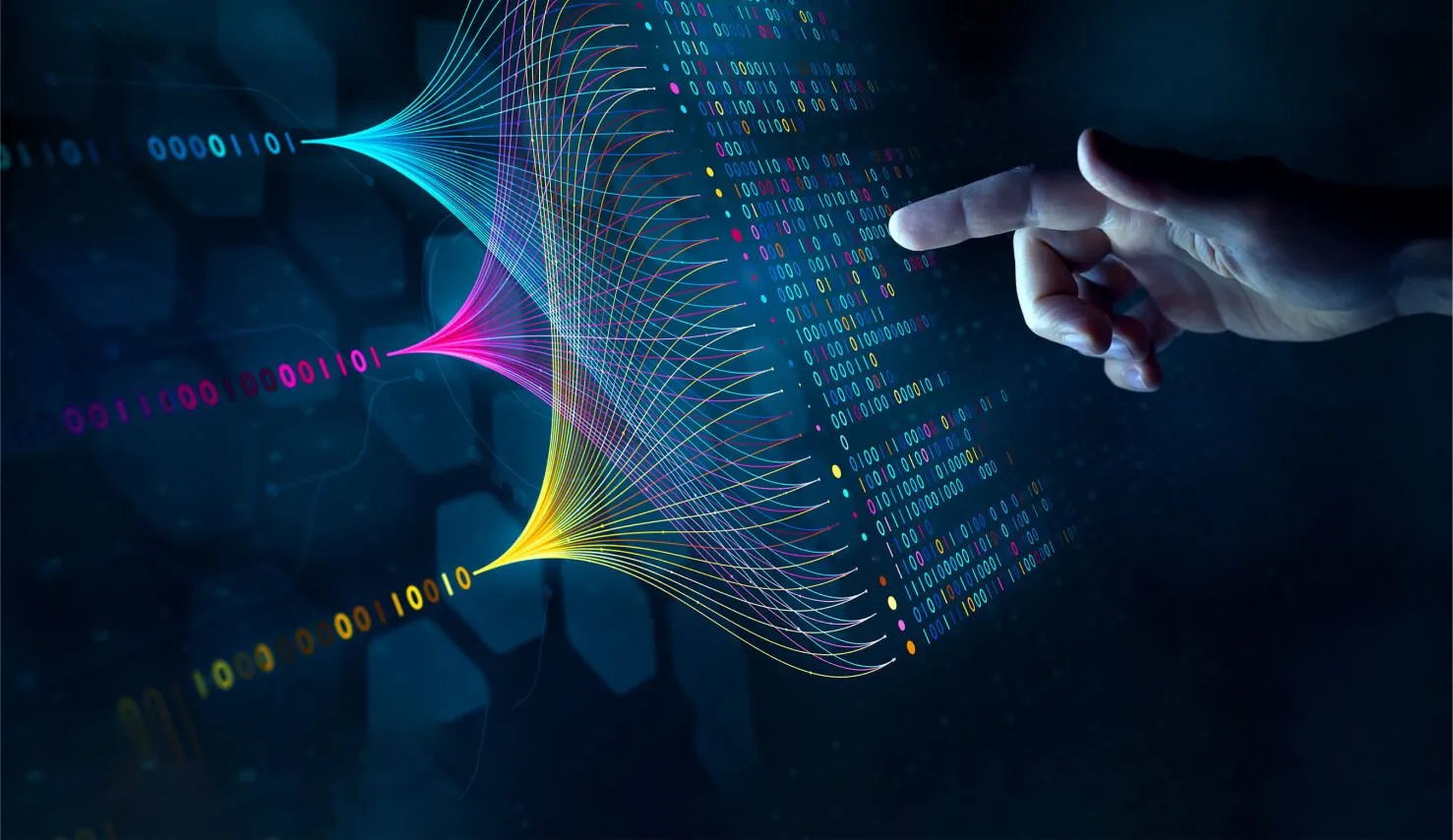Chatbots have become an increasingly popular technology for businesses looking to automate conversations and interactions with customers. Powered by artificial intelligence, chatbots can understand natural language, respond to inquiries, and complete tasks automatically that previously required human agents. According to IBM, over 85% of interactions will be handled without a human agent by 2020.
With chatbot adoption growing rapidly, many organizations are now focused on understanding the return on investment (ROI) from their chatbot implementations. Measuring factors like cost savings, revenue growth, productivity gains, and customer satisfaction can quantify the overall benefits and value derived from chatbots. Understanding ROI is critical for justifying further chatbot investments and fine-tuning implementations to maximize value.
This article will examine key metrics and methods for calculating the ROI from enterprise chatbot deployments. With the right approach to measurement and analysis, organizations can continually refine their chatbots and prove their worth as a transformative business technology. Evaluating ROI provides the insights needed to scale chatbot usage and achieve widespread automation, efficiency, and customer service improvements.
Cost Savings from Automation
Chatbots powered by RAG can deliver significant cost savings for enterprises by automating repetitive tasks previously handled by human agents. By implementing chatbots, companies can reduce labor costs associated with customer service and support.
One of the biggest areas of savings comes from automating repetitive customer inquiries. Simple questions about account status, order tracking, product availability, etc. can be handled through automated conversational flows. This reduces the volume of basic inquiries fielded by human agents, enabling them to focus on more complex issues. According to Gartner, chatbots can reduce customer service costs by up to 30%.
In addition to agent cost reduction, chatbots also save costs through increased customer self-service. By empowering customers to find information themselves through conversational interfaces, chatbots reduce the need for customers to speak with live agents. This improves efficiency and cuts operational expenses. Gartner estimates that organizations can save over $1 million annually for every 1% improvement in first contact resolution from self-service.
Overall, automating simple and repetitive tasks is where chatbots powered by RAG deliver the most significant cost savings. Companies can realize lower expenses through needing fewer agents, improved agent productivity, and increased customer self-sufficiency.
Productivity Gains
Implementing RAG chatbots can lead to significant productivity gains for an enterprise. By automating repetitive workflows and processes, chatbots free up employees’ time to focus on more high-value tasks. This time savings directly translates into increased productivity.
One of the main ways chatbots boost productivity is by automating routine customer service interactions. Simple FAQ-type queries that previously required a human agent can be fully handled by a chatbot. This reduces queue times and allows agents to spend more time on complex issues and relationship-building with customers.
Chatbots also increase productivity by streamlining internal workflows. They can automate everything from IT helpdesk requests to HR onboarding processes. Employees spend less time on administrative work and can increase their output on core responsibilities.
The productivity gains from chatbots allow enterprises to increase output without necessarily hiring more staff. Existing employees can handle higher volumes and complexity of work. This results in increased revenue and other business benefits from the same personnel base.
Revenue Growth
Deploying chatbots can directly boost revenue growth for companies in several ways. One of the biggest opportunities is through conversational commerce, where customers can purchase products or services directly through conversations with a chatbot. The intuitive shopping experience from messaging apps leads to higher conversion rates and more sales.
Chatbots simplify the buying process by answering questions, providing recommendations, and enabling purchases within the chat interface. This leads to higher average order values as customers add more items to their cart during a conversation.
Chatbots also generate more leads and sales through their interactive nature. By asking qualifying questions, bots can identify promising prospects and route them to sales teams. The conversational approach makes it easy for customers to share information to become sales qualified leads. With chatbots available 24/7, businesses can capture leads at all hours without dedicated sales staffing.
Personalization is another revenue driver. When chatbots access customer data and transaction history, they can provide personalized product suggestions and promotions. This level of individual targeting achieves higher conversion rates compared to generic promotions. The data collected through chatbot conversations also enables more relevant cross-sell and upsell opportunities.
Overall, the natural language processing and conversational capabilities of chatbots lead to better customer experiences. The frictionless engagements lead customers to spend more and drive faster revenue growth for companies deploying chatbots.
Customer Satisfaction
Chatbots provide an excellent opportunity to improve customer satisfaction by providing quick, efficient, and consistent responses to common questions and requests. Here are some key metrics to track:
- Customer Satisfaction (CSAT) scores: These can be captured after chatbot conversations by asking customers to rate their satisfaction on a 1-5 scale. Comparing CSAT from chatbot interactions versus human agents provides insight into the chatbot’s performance.
- Net Promoter Score (NPS): NPS measures customer loyalty by asking “How likely are you to recommend this company/product to a friend or colleague?” on a 0-10 scale. Monitoring NPS from chatbot conversations helps gauge their impact.
- Sentiment analysis: Tools can analyze the sentiment of chat transcripts based on natural language processing. Tracking positive, negative and neutral sentiment from chats can highlight areas for chatbot improvement.
- Issue resolution rate: The percentage of issues fully resolved via the chatbot vs those escalated to a human agent is a clear ROI metric. Increasing the resolution rate lowers human support costs.
- Common questions analysis: Identifying the top questions successfully answered by the chatbot helps determine its value. The more questions it can reliably address, the higher its ROI.
By monitoring customer satisfaction metrics, companies can refine chatbot conversations to deliver better experiences and demonstrate a clear return on investment. Satisfied customers who get quick resolutions to inquiries lead to cost savings and revenue growth.
Use Case: Search Improvement
RAG can significantly improve the search experience on e-commerce platforms by understanding natural language queries and retrieving the most relevant products from the inventory.
Traditional search relies on matching keywords, which often fails to capture the nuances in customer queries. RAG’s natural language capabilities allow it to parse sentences to derive context and intent. For example, if a customer searches for “comfortable black heels for a wedding”, RAG can infer the need for formal yet comfortable footwear and retrieve appropriate products.
In addition, RAG can search through extensive product catalogs and identify items that likely match customer requirements. This is far superior to simple keyword search. RAG can also consider various product attributes like style, color, fit, usage scenarios etc. to find the closest product matches.
By understanding natural language and product attributes, RAG delivers highly relevant results. Customers are more likely to find what they need without excessive scrolling or refining of search terms. The overall search experience is streamlined and frictionless.
Retailers stand to gain increased sales from enhanced product discoverability. Customers can navigate large inventories with ease to find suitable products. RAG also enables hyper-personalized product recommendations based on individual customer queries. This level of personalization was difficult to achieve previously.
In summary, RAG’s natural language capabilities significantly improve search relevancy and customer experience on retail platforms. It unlocks the full potential of product catalogs by understanding and responding to customer requirements. Retailers can gain loyal, satisfied customers through an enriched search experience.
Implementation Costs
Implementing a RAG chatbot incurs various costs that should be considered when calculating ROI.
Licensing and Integration Fees
RAG chatbots require purchasing a license and API access from Anthropic. Pricing varies based on usage levels and enterprise partnerships. Additional costs may include fees for integrating the chatbot with your company’s existing CRM, sales, support, and other systems. Complex integrations with legacy systems can require substantial development work.
Costs of Developing, Testing, and Maintaining
Your team will need to invest time in developing, training, testing, and maintaining the chatbot. Developers and conversation designers are needed to program the chatbot’s dialogs, integrations, and workflows. Subject matter experts should train and test the chatbot to ensure accuracy. Ongoing maintenance includes monitoring conversations, adding new dialogs, and improving performance over time. These personnel costs can be significant, especially in the early stages.
Calculating ROI
To determine if a chatbot is providing a positive ROI, you need to calculate the return generated versus the investment made over a defined period of time.
The basic formula for ROI is:
(Gain from Investment – Cost of Investment) / Cost of Investment
For a chatbot ROI, this translates to:
(Revenue & Savings from Chatbot – Chatbot Implementation Costs) / Chatbot Implementation Costs
When calculating the ROI, it’s important to use a long enough timeframe to realize the full benefits. Many of the gains from chatbots accumulate over the first 6-12 months as the bot handles more conversations and becomes smarter through machine learning.
Conducting a break-even analysis can pinpoint when the cumulative savings and revenue from the chatbot will surpass the implementation and ongoing costs. Tracking metrics over time allows you to determine when this break-even point occurs.
Many companies find chatbots reach ROI positive status within the first year. But the timeframe can vary based on factors like integration complexity, conversational design, and how widely the bot is deployed. Setting ROI expectations appropriately helps assess the investment.
Quantitative Benefits
Chatbots powered by RAG can provide significant qualitative benefits that are harder to quantify but still important for an organization.
Better Customer Experience
Well-designed chatbots create smoother, more pleasant customer interactions. They provide quick answers to common questions and route users to the right human agents when needed. This results in higher customer satisfaction, reflected in metrics like Net Promoter Score. Chatbots are available 24/7 and scale to handle increased demand, reducing wait times. They also allow customers to self-serve, getting answers anytime without having to contact support.
Competitive Differentiation
RAG improves customer satisfaction by providing quick and accurate responses to queries. Personalized recommendations matched to customer preferences increase engagement. Improved search makes it easier for customers to find products they want. Overall, RAG creates a smoother, more customized shopping experience.
Increased Revenue
Adding chatbots can differentiate an organization from competitors. It signals innovation, modern technology adoption, and dedication to customer service. Customers today expect conversational interfaces. Offering chatbots shows a commitment to meeting their needs. This can improve brand perception.
Employee Satisfaction
By automating repetitive tasks, chatbots free up human agents to focus on higher-value work. This leads to greater job satisfaction and lower turnover. Agents spend less time answering common questions and more time building relationships and solving complex issues. RAG chatbots also provide agents with better information, improving their productivity. This creates a more engaging work environment.
Key Metrics to Track
When evaluating the ROI of a RAG chatbot implementation, there are a few key metrics to focus on:
Conversation Containment Rate
This refers to the percentage of conversations that are fully resolved by the chatbot without needing to hand off to a human agent. A higher containment rate equals greater automation and efficiency. Setting a target containment rate and monitoring progress is crucial.
CSAT Scores
Measuring customer satisfaction (CSAT) scores provides insight into the quality of the customer experience with the chatbot. High CSAT indicates the bot is effective at understanding requests, providing accurate answers, and delivering a smooth interaction. Tracking CSAT over time is important.
Monitoring these quantitative metrics provides tangible evidence of the chatbot’s business impact that can be used to justify the investment and fine-tune the solution. With the right KPI tracking, the returns of deploying a RAG chatbot become clear.
Chatbots powered by RAG represent a significant opportunity for enterprises to achieve cost savings, productivity gains, and revenue growth. However, calculating the ROI requires looking beyond the raw cost savings from automation. Key factors to consider include:
Summary of ROI considerations
- Cost savings from replacing human agents with bots
- Productivity increases by letting employees focus on higher priority tasks
- Revenue increases from higher customer satisfaction and retention
- Implementation and ongoing maintenance costs
Benefits beyond cost savings
The ROI analysis should also factor in qualitative benefits that are harder to quantify directly:
- Improved customer satisfaction from 24/7 availability and quick response times
- More consistent customer service by reducing human error and fatigue
- Higher employee morale as bots handle repetitive inquiries
Future developments to improve ROI
As chatbot technology matures, ROI will continue improving in the future via:
- More advanced NLP to handle complex conversations
- Integration with back-end systems to access data in real-time
- Predictive analytics to understand customer needs better
Enterprises evaluating RAG chatbots should take a long-term view on ROI. The upfront investment can provide exponential returns over time as technology evolves.







































